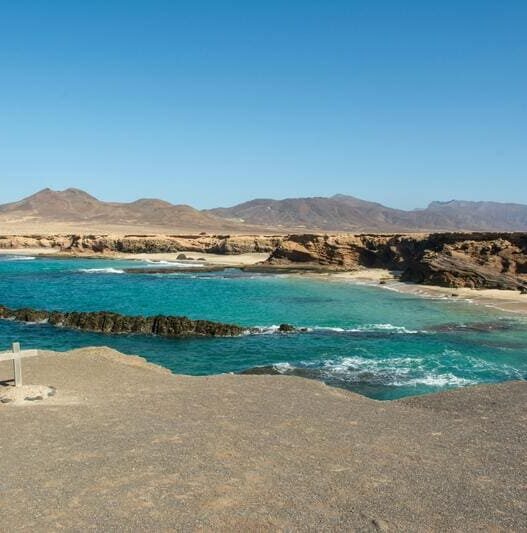There's something magical about that first big trip – the rush of boarding your flight, the smell of new cities, and the thrill of knowing you've got no idea what's coming next.
I still remember landing in Italy for my first solo adventure, completely jet-lagged but too excited to sleep. Within the first 24 hours, I'd ordered the wrong meal, gotten lost trying to find my hostel, and accidentally boarded the wrong train because I didn't realise you had to validate your ticket first. Classic rookie move.
But that's the thing about travelling for the first time – you don't know what you don't know. What starts as excitement can quickly turn into confusion when you're standing in a foreign metro station with no signal, or when your suitcase decides to burst open mid-transit (been there). Over the years, I've learnt that most first-timer travel mistakes can be avoided with a little planning and a few insider tips.
From figuring out how to pack light for multiple destinations to staying connected abroad with an eSIM and choosing reliable travel insurance, I've rounded up the biggest lessons I've learnt from years of being on the road.
These aren't your typical “don't forget your passport” tips – they're the things you only learn after a few missteps, missed trains, and spontaneous detours that turned into the best stories.
READ ALSO: Best eSIM for New Zealand Best eSIM for Costa Rica Best eSIM for The USA Best eSIM for Australia
7 Beginner Mistakes You'll Want to Skip
1. Ignoring Digital Security
Helsinki, Finland
When you're travelling, it's easy to assume your biggest worry is losing your luggage or missing a train – but digital security is the silent threat most travellers forget about. One careless connection can expose your entire digital life, from your email and banking apps to your passport scans sitting innocently in Google Drive.
Don't Use Free Wi-Fi
That “Free Airport Wi-Fi” sign at the gate? It's often a hacker's playground. I once connected to an unsecured café Wi-Fi in Ljubljana, and within minutes my password manager notified me of a suspicious login attempt. It's not uncommon – hackers set up fake hotspots with names like “FreeAirportWiFi” to trick travellers into connecting. Once you do, they can monitor your activity or even inject malware into your device.
Even legitimate public networks can be risky. Many don't use encryption, which means anyone on the same network can potentially see what you're doing. If you're booking accommodation in Dubrovnik, checking into online banking in Athens, or uploading content from a hostel in Bansko, you're giving digital thieves an easy target.
Use A VPN
Not just any, but the right one.
A reliable VPN for travellers encrypts your internet activities, securing your data especially if they are used when using public locations that may be very dangerous with identity thefts.
But not all VPNs are equal. Free ones often collect and sell user data – which completely defeats the purpose. Look for reputable, paid VPNs — which have apps that work seamlessly on mobile and laptop, and can auto-connect when you join public Wi-Fi.
When I was travelling through the Balkan Region and needed to access online banking that was geo-blocked, my VPN saved me from hours of frustration. It's also useful for accessing local versions of websites — such as airline deals available only in specific regions – or staying connected to streaming platforms from home (handy on those long ferry rides between Athens and Milos).
Go Beyond Just A VPN
A VPN is just one layer of digital defence. Here's how to strengthen it further:
- Use two-factor authentication (2FA): Even if someone steals your password, they can't access your account without the second code.
- Avoid public charging ports: These can be tampered with — use your own charger or a USB data blocker.
- Back up your documents: Keep scanned copies of your passport, insurance, and itinerary on a secure cloud service (I personally store mine in Dropbox with offline access enabled).
- Use an eSIM instead of random local SIM cards: With eSIMs, you connect directly to trusted mobile networks — no sketchy shops or suspicious Wi-Fi logins needed.
Real Digital Safety Comes With Habits
Travelling smart isn't just about finding the best flight deal or knowing the right plug adaptor — it's also about protecting your identity and finances from invisible threats. Before every trip, make sure your devices are updated, your passwords are stored securely, and your VPN auto-connects before you browse.
Trust me – the peace of mind you get knowing your data's safe while you're watching the sunset in Santorini or uploading a vlog from Split is worth it.
2. Not Researching Properly
One of the easiest ways to ruin a good trip? Landing somewhere totally unprepared.
I've learned this the hard way – from arriving in Gili Islands without realising most places outside Bali didn't accept cards, to paying double for a taxi in Bali because I didn't check how local fares worked.
Researching isn't just about booking flights or hotels. It's about understanding how a destination works — the laws, social norms, scams, and even the small, everyday details that make travel smoother. For instance, in Bali, some areas charge extra for using card payments, while in Gili Islands, it's common for smaller cafés to only take cash.
Go Beyond the Basics
Spend time reading recent travel blogs (not just TripAdvisor summaries) to learn from people who've actually been there. Look up local customs — things like tipping culture, dress codes for religious sites, and how public transport tickets work. These small insights save you time and embarrassment.
If you're travelling long-term or across multiple countries, like my 9-day Hokkaido trip, I recommend building a digital itinerary. I usually plot mine in Google Maps — pinning places I want to visit, restaurants I've bookmarked from other travellers' recommendations, and key landmarks in each city.
Export Your Itinerary & Go Offline
Once your map's ready, export your custom Google Map itinerary so you can open it directly on your phone. Then download offline maps for each region — it's a lifesaver when you're driving through remote areas like Albania's coastal towns or Slovenia's countryside, where mobile data can get patchy.
To do this:
- Open Google Maps → tap your profile → Offline Maps → Select Your Own Map.
- Zoom into the region you'll be exploring.
- Download it before you leave Wi-Fi.
It lets you navigate, search addresses, and even get directions — all without an internet connection.
3. Overpacking Big Time
Ah, the overpacking struggle — it gets even realer when you're a digital nomad.
First-timers often think bringing everything “just in case” will make their trip easier, but it usually does the opposite. I learned this the hard way while travelling around Mexico — dragging a 25kg suitcase up cobblestone streets in San Miguel de Allende was not my best moment.
Overpacking doesn't just weigh you down physically; it limits your flexibility too. Imagine trying to hop on a spontaneous road trip in Costa Rica or a quick bus ride to the coast — suddenly, that massive bag becomes a burden. Plus, extra luggage can mean higher check-in fees and extra stress when you're moving often.
Instead, go for a capsule wardrobe: versatile, lightweight pieces that mix and match easily. Think breathable fabrics for warm weather, a few neutral layers, and comfortable shoes that work for both café-hopping and weekend hikes.
And if you're packing for a road trip, keep your setup minimal and smart. Store your essentials in packing cubes, keep a small daypack handy for spontaneous detours, and leave some space for local finds (because let's be honest, you'll definitely end up buying something at a Mexican artisan market).
Less stuff = more freedom to move, explore, and actually enjoy the adventure.
4. Ignoring Budget Concerns
Spending without thinking is one of the biggest mistakes first-time travellers make — especially when everything feels new and exciting. I totally get it. When I first travelled through New Zealand on a budget of just $2,600 for 3 weeks, I had to learn how to manage every dollar wisely. Between the pricey activities (hello, bungee jumping!) and the irresistible flat whites, it's easy to overspend if you're not careful.
The key is to set a daily budget that gives you room for spontaneity without draining your savings. Use apps like Trail Wallet or TravelSpend to track your expenses — they make it easy to see where your money's going and help you adjust if you're spending too fast.
And don't underestimate how much you can save (and experience) by living like a local. In New Zealand, I skipped restaurants some days and cooked simple meals in hostel kitchens — or grabbed fish and chips by the beach instead of splurging on a fancy dinner. It saved me a ton and gave me more genuine local moments.
Before you go, make sure your bank accounts, credit cards, and emergency funds are all sorted. Let your bank know about your travels to avoid card blocks, and have a small buffer for unexpected costs — they always come up.
At the end of the day, smart money management isn't about limiting fun — it's about giving yourself the freedom to enjoy your trip without coming home to credit card debt.
5. Failing To Prioritize Safety
It needs to be clear: When you travel, safety is always the first thing.
In moments that people are in unfamiliar settings full of distractions, people often fail to remain careful. Make copies of essential identification cards, such as your IDs or any information on medical care; share these with your family member.
Being aware and maintaining a safe distance can help avoid any thefts or tricky situations. Avoid showing a ton of costly fashion items, and use discretion during conversations with strangers as scams can occur in places aimed at visiting new people. Keeping constant alerts from authorities in the neighborhoods nearby is useful in the course and allows you to make choices when needed.
6. Skipping Insurance Details
It's one of those things you think you'll never need — until you really do.
Many first-time travellers (and even seasoned ones) skip travel insurance to save money, but that decision can cost far more in the long run. From missed flights and lost luggage to unexpected hospital visits, travel is unpredictable — and being caught off-guard without coverage can be a nightmare.
If you're travelling long-term or working remotely, digital nomad insurance is a must. It's designed specifically for people who move between countries and need coverage that travels with them. Unlike regular travel insurance, these plans often include worldwide medical coverage, tech protection (for laptops, cameras, and gear), and flexible renewals so you can extend your trip without returning home.
I recommend:
- SafetyWing – budget-friendly and perfect for digital nomads hopping between countries.
- Heymondo – great for comprehensive coverage and an easy-to-use mobile app.
- World Nomads – ideal for adventure travellers who need activity-specific protection.
Before you buy, make sure your plan covers medical evacuation, trip cancellations, stolen gear, and emergency medical expenses. Read the fine print — some policies exclude high-altitude hiking or water sports unless you add them on.
Travel insurance isn't just paperwork — it's your safety net.
7. Not Embracing the Local Culture
Local friend takes us to a local hot spring!
Going somewhere new but not actually learning it; it is a wasted experience altogether. It helps enhance the richness in experiences by joining the culture of local residents and trying out local languages which facilitates interaction. Respecting local customs reduces possible offenses while enhancing deeper connections with local peoples.
When I was in Bansko, Bulgaria, a local friend invited us to a hidden hot spring tucked away in the mountains. There were no crowds, no signs — just warm, mineral-rich water surrounded by pine trees and laughter. That spontaneous moment, guided by someone who knew the place best, ended up being one of the most memorable parts of the trip.
So, don't just pass through – take part. Attend a local festival, eat where the locals eat, or join a community event. These are the kinds of experiences that turn a trip into a story worth telling.
Travelling for the first time is exciting, but it can also feel overwhelming – there's just so much to think about. The truth is, even the most seasoned travellers have made their fair share of mistakes along the way.
Think of these travel lessons as tools, not rules. Keeping your finances in check means you can stretch your trip longer — maybe even enjoy 3 incredible weeks in New Zealand for under $2,600. Having digital nomad insurance gives you peace of mind to work remotely from a café in Mexico without worrying about accidents or lost gear. And knowing what to pack (and what not to) saves you from dragging half your wardrobe up a flight of hostel stairs.
In the end, travelling is all about balance — being prepared enough to avoid major headaches, but flexible enough to say yes to unexpected adventures. Every mistake you avoid now is one more story you'll have later – the kind you'll smile about when you look back and think, “I really did it.”


















